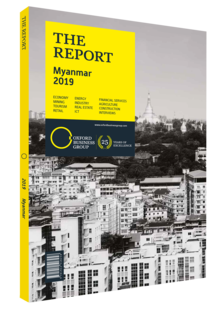Helpful tips for first-time travellers to Myanmar
Etiquette
In a formal setting “U” should be used in front of a name when addressing a man and “Daw” when addressing a woman, roughly translating to Mr and Lady. It is common practice to remove footwear before entering someone’s workplace or home but not always required. Removing shoes and socks before entering a pagoda or temple is a must. A handshake is usually the first introduction in a business setting, and is used in greeting and as a farewell. When handing over something such as a business card, it is polite to touch your right elbow with your left hand, or vice-versa.
Ethnic Groups & Languages
There are more than 100 languages spoken across Myanmar by 135 ethnic groups. The Burman, or Bamar, is the biggest group, accounting for 68% of the population, followed by the Shan (9%), Karen (7%), Rakhine (3.5%), Chinese (2.5%), Mon (2%), Kachin (1.5%), Indian (1.25%) and Kayah (0.75%). The remaining 4.5% is made up of Wa, Naga, Lahu, Lisu and Palaung ethnic groups.
The most commonly spoken language is Myanmar (formerly known as Burmese), which is the primary language of instruction at schools. Other major vernaculars include Shan, Karen, Kachin, Chin, Mon and Rakhine. English was widely taught at schools until the early 1960s, when General Ne Win decided to abandon the language. English was readopted in the late 1980s and is now generally spoken by the older generation and the expanding urban elites and middle class.
Transport
There are a variety of means of road transport in Myanmar. In Yangon the taxi is preferred. Taking a regular taxi requires the passenger to bargain and negotiate the cost of the ride in advance. To increase mobility solutions, Yangon’s chief minister authorised international ride-hailing apps to operate in the city in 2017, and it is possible to use services like Grab, which purchased Uber’s South-east Asia operations in March 2018. Flying is the most convenient means of intercity travel, with round-trip flights between Yangon and Mandalay costing around $180.
Visa
It is possible to attain a visa on arrival, but it is best to contact your in-country embassy before visiting Myanmar to ensure that you meet the requirements to do so. It is also important to ensure you have all the relevant documents needed for a visa on arrival, or you will be sent back on the same flight.
A visa can also be applied for in advance through your local embassy or through an easy online application process that issues both tourist and business visas. A tourist visa costs $50, is valid for 28 days and takes no more than three days to get approved. A business visa is available for 70 days and costs $70. Business visas can have different durations and allow for single or multiple entries in the country. Applicants are required to submit a colour passport photo, a letter of invitation and company registration documents, and a letter from the employer stating that the applicant is travelling to Myanmar for business purposes. All visitors must have a valid passport with at least six months remaining validity to enter the country.
Currency
The kyat is the local currency, although US dollars are commonly accepted. It is important to keep dollars crease-free, or they will not be accepted. Kyat notes are available in denominations of 50, 100, 200, 500, 1000, 5000 and 10,000. As of late December 2018 the exchange rate was around $1:MMK1541. Recent efforts on the part of the government have managed to stymie rising inflation. ATMs can be found around the country, making it easy to take out kyat. Payments by credit card are available in most tourist areas, but it is advisable to carry cash at all times.
Electricity
An inefficient power transmission and distribution network means that power shortages often occur. While the situation has improved, many hotels, apartments and businesses own generators to provide backup power. Electrical outlets are generally the 220-Hz, AC type, or C or F – the same two-pin system as Europe. Bringing an adaptor when you travel is recommended as they can be difficult to track down.
You have reached the limit of premium articles you can view for free.
Choose from the options below to purchase print or digital editions of our Reports. You can also purchase a website subscription giving you unlimited access to all of our Reports online for 12 months.
If you have already purchased this Report or have a website subscription, please login to continue.

